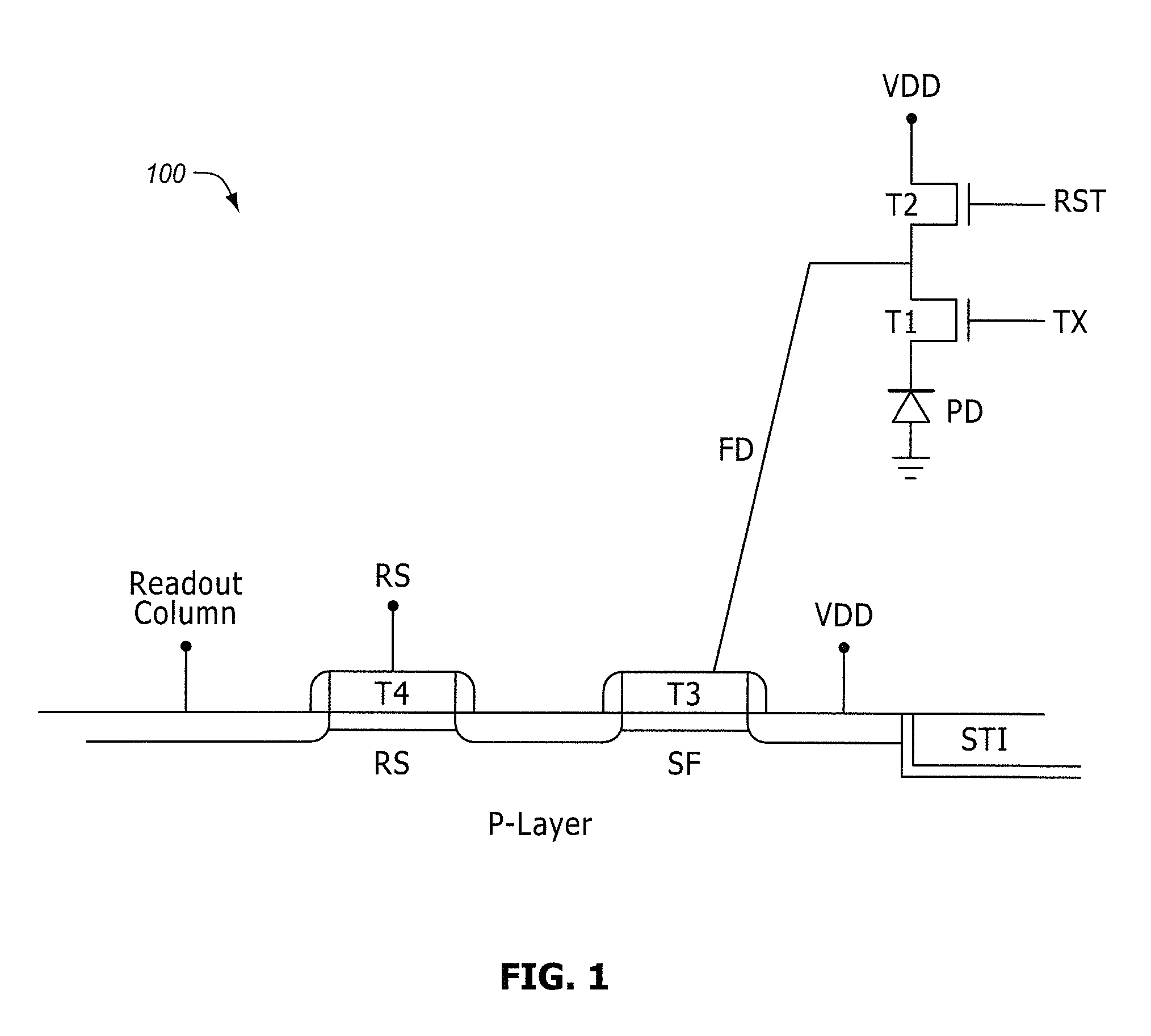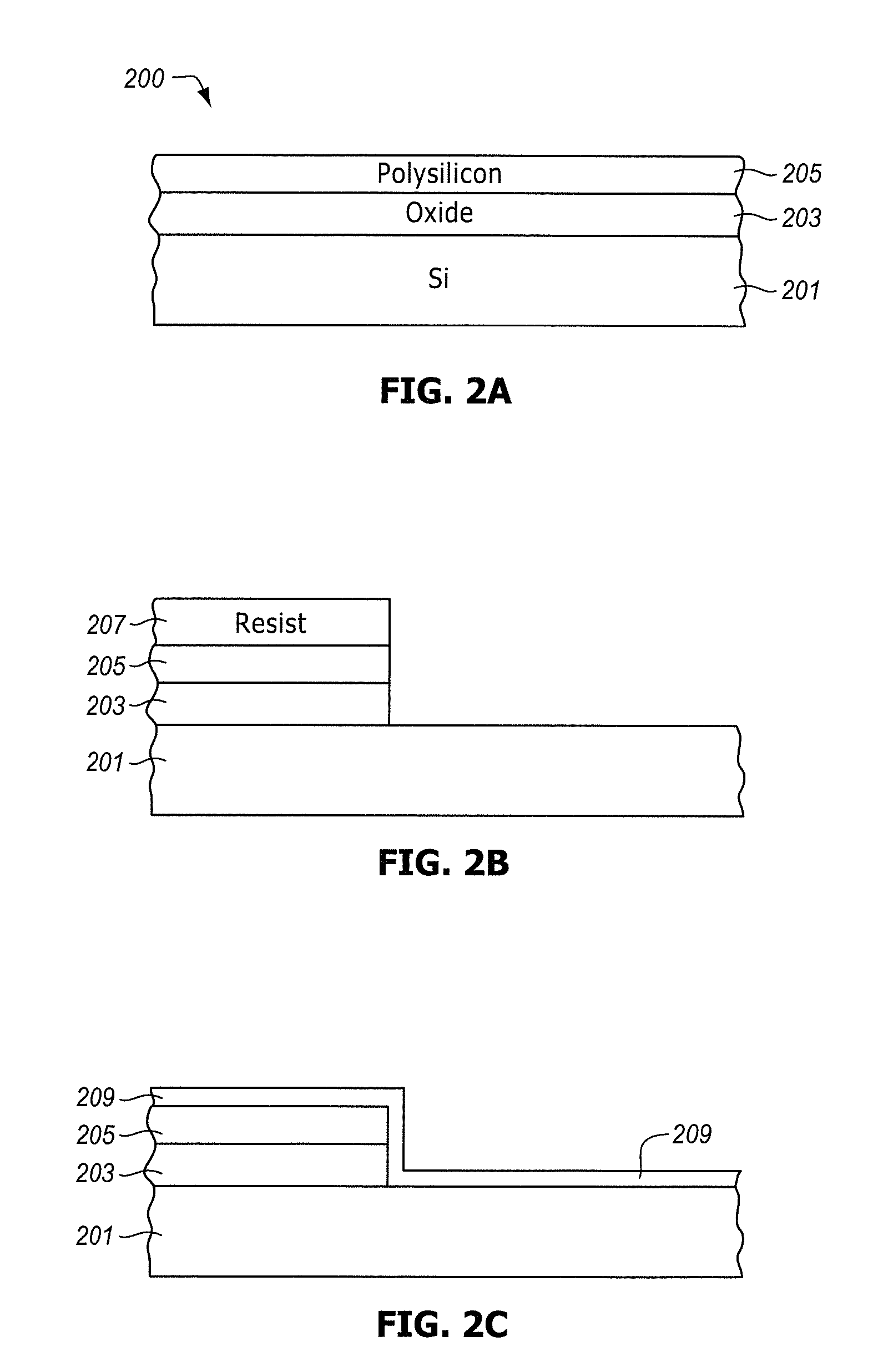Image Sensor with Reduced Noiseby Blocking Nitridation Over Selected Areas
- Summary
- Abstract
- Description
- Claims
- Application Information
AI Technical Summary
Benefits of technology
Problems solved by technology
Method used
Image
Examples
Embodiment Construction
[0013]Typically, a semiconductor has a gate oxide under the gate electrode of any CMOS transistors. The thickness of the gate oxide is adjusted based on the electrical characteristics that are desired for each transistor. In a pixel circuit, a source-follower transistor, which serves as an amplifier, will have a much thicker gate oxide than many of the other transistors that serve as switches. However, when nitridation is used it is typically applied over the whole silicon wafer surface. As a result, both thin and thick gate oxides are subject to nitridation. However, nitridation is only needed to block boron penetration for thin gate oxide layers. Thick gate oxide layers, commonly used for pixel array amplifiers and for analog circuit elements are much less susceptible to boron penetration.
[0014]The source-follower gate oxide layers can be protected from nitridation while the standard gate oxides are exposed to nitridation. A barrier layer can be deposited over the thick gate oxide...
PUM
 Login to View More
Login to View More Abstract
Description
Claims
Application Information
 Login to View More
Login to View More - R&D Engineer
- R&D Manager
- IP Professional
- Industry Leading Data Capabilities
- Powerful AI technology
- Patent DNA Extraction
Browse by: Latest US Patents, China's latest patents, Technical Efficacy Thesaurus, Application Domain, Technology Topic, Popular Technical Reports.
© 2024 PatSnap. All rights reserved.Legal|Privacy policy|Modern Slavery Act Transparency Statement|Sitemap|About US| Contact US: help@patsnap.com










